Inside The New York Botanical Garden
The New York Botanical Garden
Posted in Adult Education on May 12 2011, by Ann Rafalko
Ed. note: We offer many classes here at the Garden in a plethora of disciplines and at many levels, from “just for fun” to professional (see a pdf of the catalog here). But no matter how appealing the subject, the classes would be nothing without the instructors. On Plant Talk, we’ll introduce you to them, and their stories.
 Bill Einhorn, Instructor, Landscape Design
Bill Einhorn, Instructor, Landscape Design
The year 2011 marks a milestone in my career at The New York Botanical Garden–it was 30 years ago that I received a call from the Garden with news that it received a grant for a summer internship and if I’d be interested in coming in for an interview. While that began my professional association with the Botanical Garden, my roots here run even deeper. When I was 5 years old, my mother signed me up for Children’s Education classes at the Garden. I vividly remember learning about and receiving a Venus’ flytrap and asking the instructor if it would eat my sister. I also returned to the Garden during my studies in Landscape Architecture at Syracuse University to walk the grounds and memorize trees. My wedding photos were taken in the Rose Garden, and my favorite time of the year was strolling along Magnolia Way when the magnolias were in bloom.
After my summer internship in 1981, the Garden invited me back during my spring and summer breaks, and upon graduation hired me to be on staff. I started teaching in the mid 1980s and to date, by my estimates, have instructed over 3,000 students. Several have gone on to graduate programs, joined or established successful businesses, or completed projects at their own homes.
My affiliation with the Garden has brought me many personal and professional relationships and has made me a better Landscape Architect. My greatest feeling of accomplishment is when I run into students from many years ago who tell me the impact that I have had on their careers. Hopefully, I have another 30 years left in me to enjoy teaching and experiencing the continued growth of the Garden’s programs.
Are you looking to change your life, like Bill did? In just five weeks you can earn almost half the total hours needed for a Certificate in Landscape Design. Interactive classes, taught by professional landscape architects and designers, cover each step of the design process, from site analysis to design development. Other subjects include landscape design history, graphics, and site detailing. Guest lecturers present their own work and discuss design philosophies, professional issues, and presentation strategies. The beautiful New York Botanical Garden is used for design projects and plant study.
Enrollment is limited to allow for individualized attention and comprehensive project critiques.
Posted in Photography on May 12 2011, by Ann Rafalko
These trees alongside the Steere Herbarium look like something Chris van Allsburg would draw, don’t they?

Photo by Ivo M. Vermeulen
Posted in Science on May 11 2011, by Amy Litt
Three Garden scientists participated in an international collaboration that sequenced the genome of the lycophyte Selaginella moellendorffii. Lycophytes, known as ground pines or club mosses, are an ancient lineage of vascular plants with small, scale-like leaves that lack the ability to make seeds but produce copious spores. They represent an intermediate evolutionary stage between mosses, which do not have conducting and support (vascular) tissue, and plants such as conifers or flowering plants, which have vascular tissue and complex leaves and protect their embryo in seeds. The genome project was undertaken to see what clues might lie in the DNA to the increasing adaptation of plants to land and the increasing complexity that came along with it. The results were published last Friday in the prestigious journal Science.
Dr. Amy Litt, Director of Plant Genomics and Cullman Curator, Dr. Barbara Ambrose, Cullman Curator and member of the Genomics Program, and Dr. Ken Karol, of the Lewis B. and Dorothy Cullman Program in Molecular Systematics, were part of a group of scientists that identified and described the genes of this important species. Pinpointing the location and sequence of specific types of genes in the genome allowed them to compare the genes of Selaginella with the genes of other plant species that have had their genome sequenced, which include algae, a moss, and several flowering plants. The group, led by Dr. Jody Banks at Purdue, found that some genes are present only in flowering plants and not in the moss or Selaginella; these genes might be needed for the development of flowers and fruits, which are only found in flowering plants. Other genes are found in Selaginella and flowering plants but not in the moss, and these probably function in the increased adaptation to land shown by vascular plants in contrast to mosses.
Dr. Ambrose is now studying some of these genes in more depth in the Pfizer Lab, focusing on a group that is known to control important developmental processes in flowering plants. We think that changes in these genes may have played crucial roles in land plant evolution, perhaps underlying the evolution of key adaptive features, so it will be very exciting to find out what these genes do in Selaginella.
Posted in Photography on May 11 2011, by Ann Rafalko
If early spring had an official color, I would nominate that it be yellow. And mid-spring? Pink. Definitely pink.
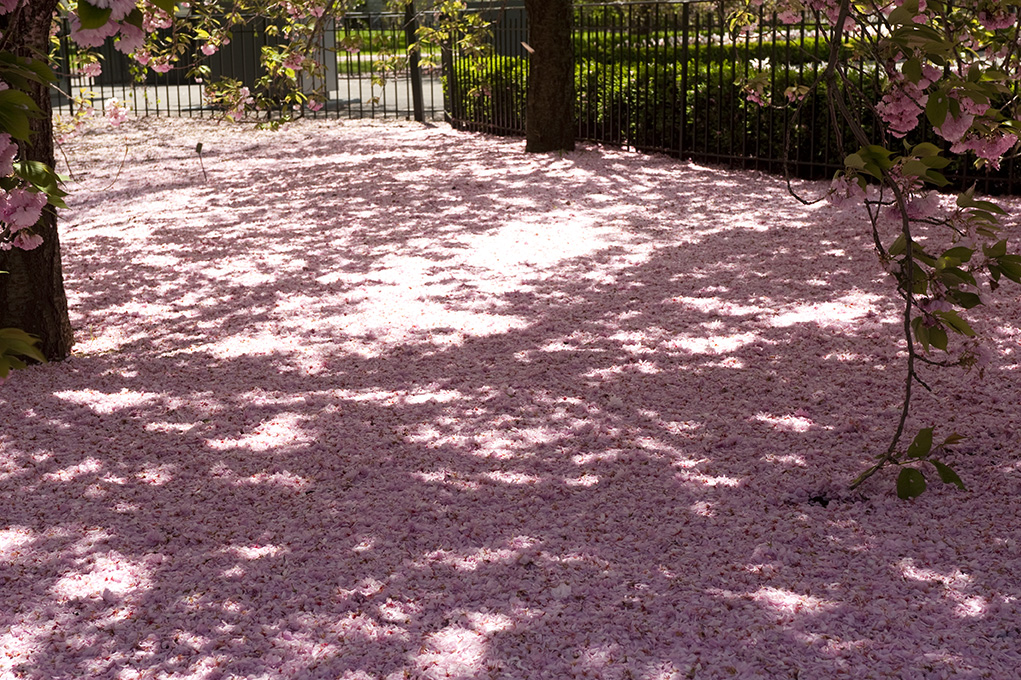
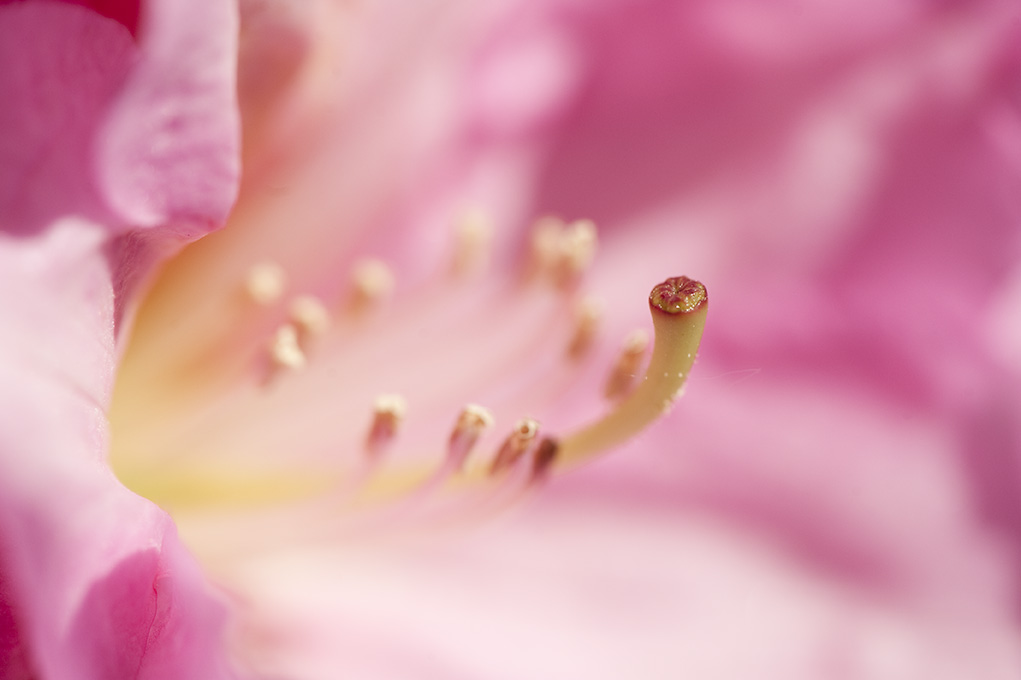
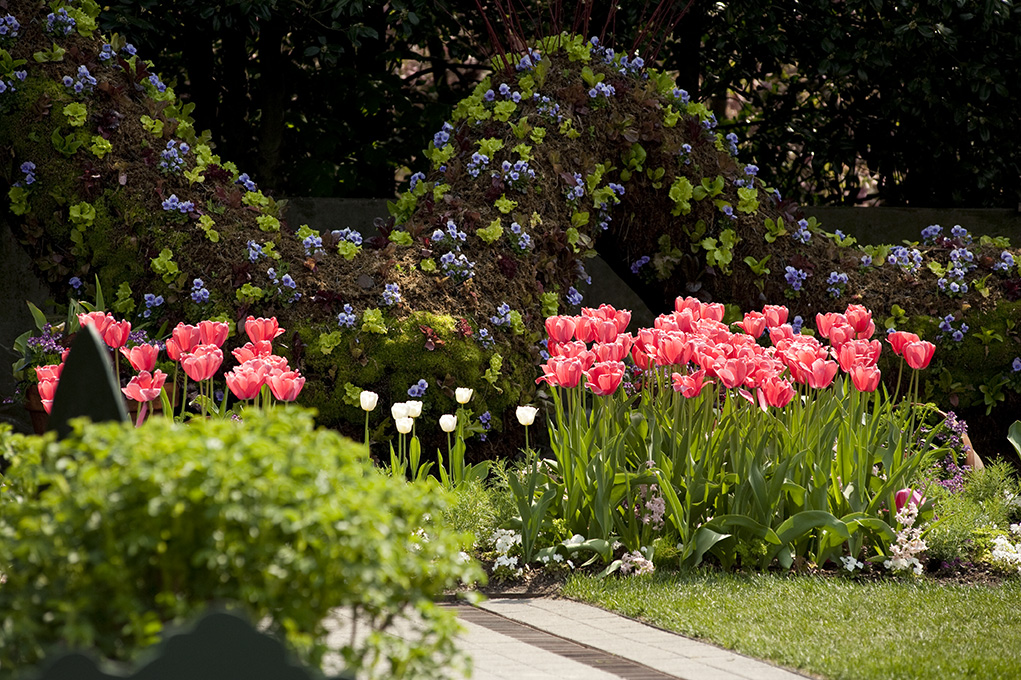
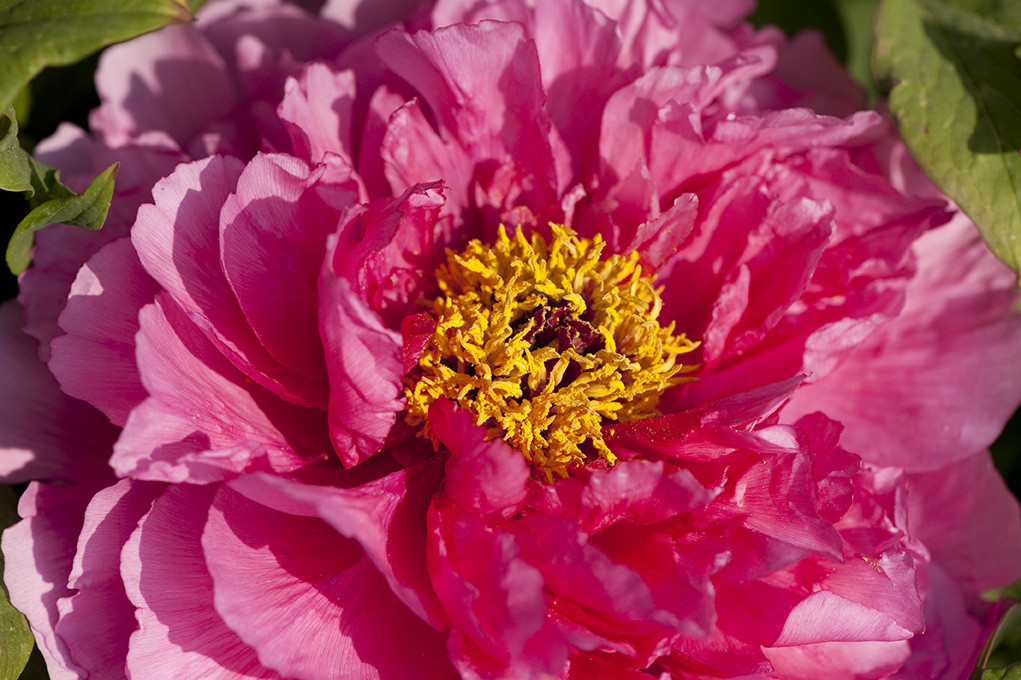
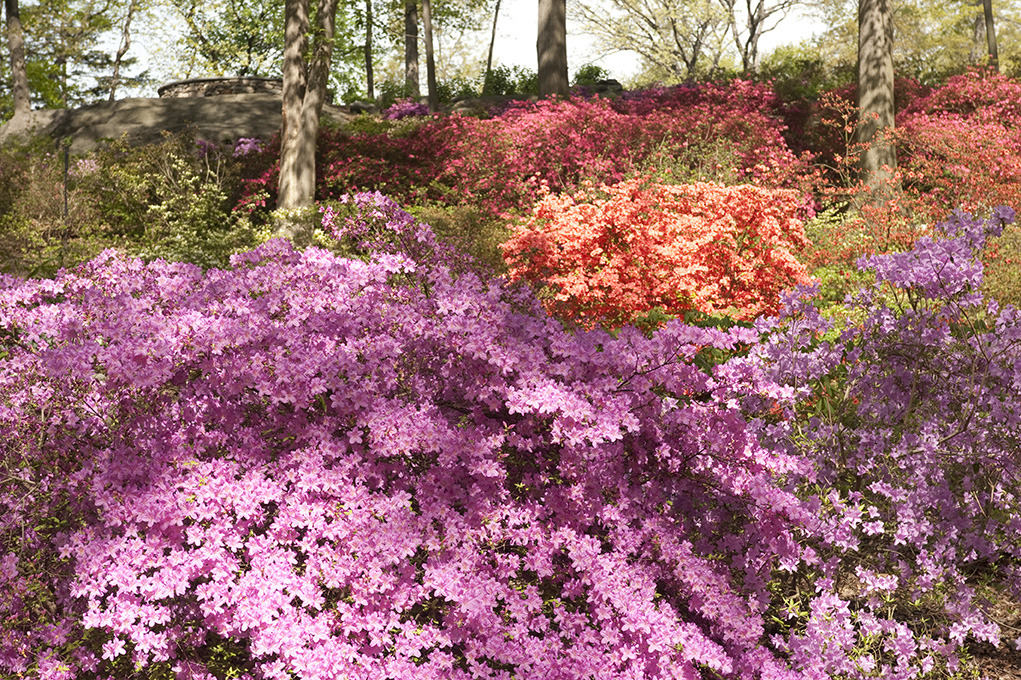
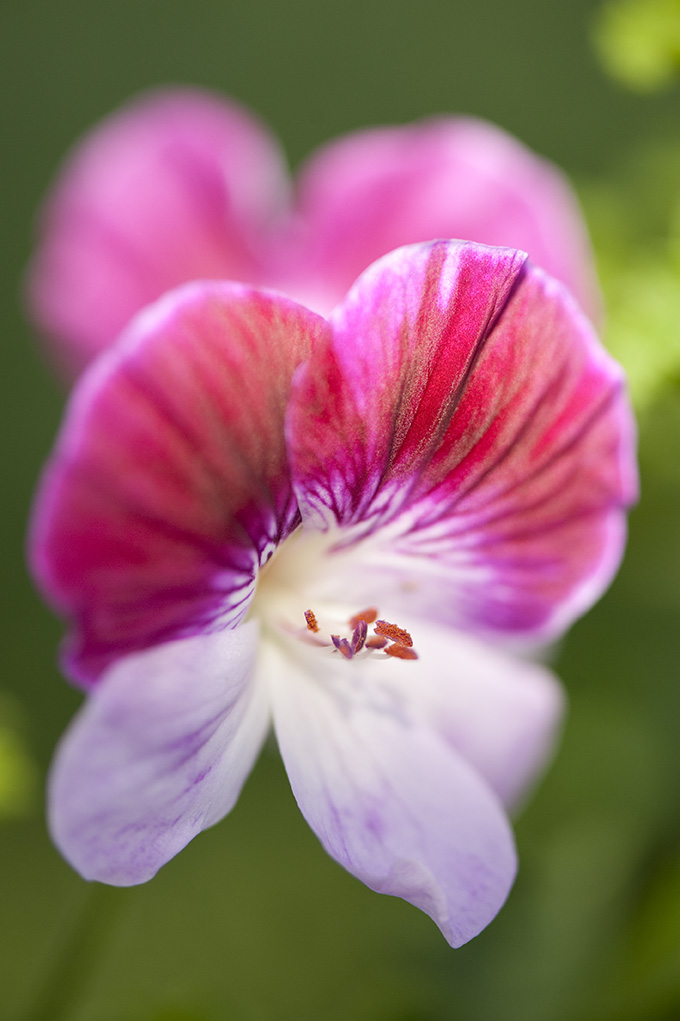
Posted in Gardening Tips on May 10 2011, by Sonia Uyterhoeven
As discussed last week, good site conditions such as a soil pH of between 4.5 and 6, soil rich in organic matter, good drainage, and a part-shade to full-sun environment including protection from strong winds are essential for the health of azaleas. Be sure to research basic information about the azaleas you are purchasing including color and bloom time, its ultimate size, growth habit, and hardiness When planting azaleas, it is important to provide enough space between them for sufficient light and air circulation. Plant labels and catalogs generally supply appropriate spacing information for both the height and width of the azalea.
Chances are that the azaleas you purchase will have been grown in a container, either in a soil-less potting medium or a mixture of composted bark and sand. While these are fine mediums for plants grown in a container, making them easier to care for, the potting mediums are very different in structure from native soil, and water will not flow freely from one to the other. Often, the native soil around the newly planted azalea will be moist while the root ball remains dry. Because of this, the day before planting, water your potted azaleas so that they are well hydrated but not too soggy.
If you have good drainage, plant your azaleas at the same level to the soil as they were in the container. The planting holes should be the same depth as the container and 3-5 times as wide, with sloping sides. Most of the roots on each azalea will be growing in the top 12 inches of the soil, extending outward rather than downward. The goal in making a wide hole is to loosen the soil in the area of maximum root growth. Remember, azaleas are a shallow rooting plant. Do not dig the hole excessively deep, otherwise the root ball will sink and settle too low. If you have clay soil, you can plant your azaleas slightly higher than grade (1 to 2 inches higher). Sometimes azaleas are planted 6 inches higher with great success. To do this, add coarse sand and leaf compost to the backfill and grade on a slight slope.
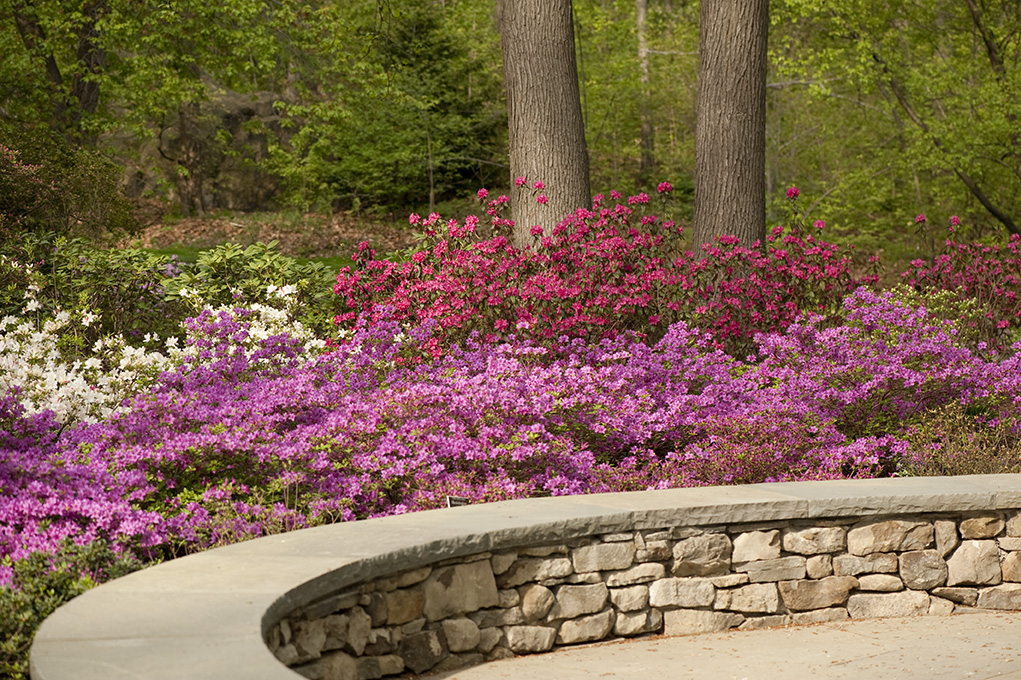
For more inspiration visit the amazing, new Azalea Garden.
When removing an azalea from its container, take care to protect the tiny hair-like feeder roots along the main roots, which can be torn if the plant is pulled from its base straight from the container. Instead, for a small container, with one hand cup the top of the container around the stem. Tip the container upside down–cradling the plant with the cupped hand–and slide it out of the container. If the root ball sticks to the container, tap it against a firm surface to dislodge the plant from the pot. For a large container, two people may be needed to hold and tip the container or to lay it on its side and gently slide the plant out.
Get more great advice on planting azaleas below.
Posted in Around the Garden on May 9 2011, by Peter Kukielski
Ed. note: The Peggy Rockefeller Rose Garden is swinging back into life! Here’s a quick look at some of the year’s first blooms from Peter Kukielski, the Rose Garden’s curator.
As expected, the early species roses have begun blooming. These are quick to come into bloom and are only around for a couple of weeks.
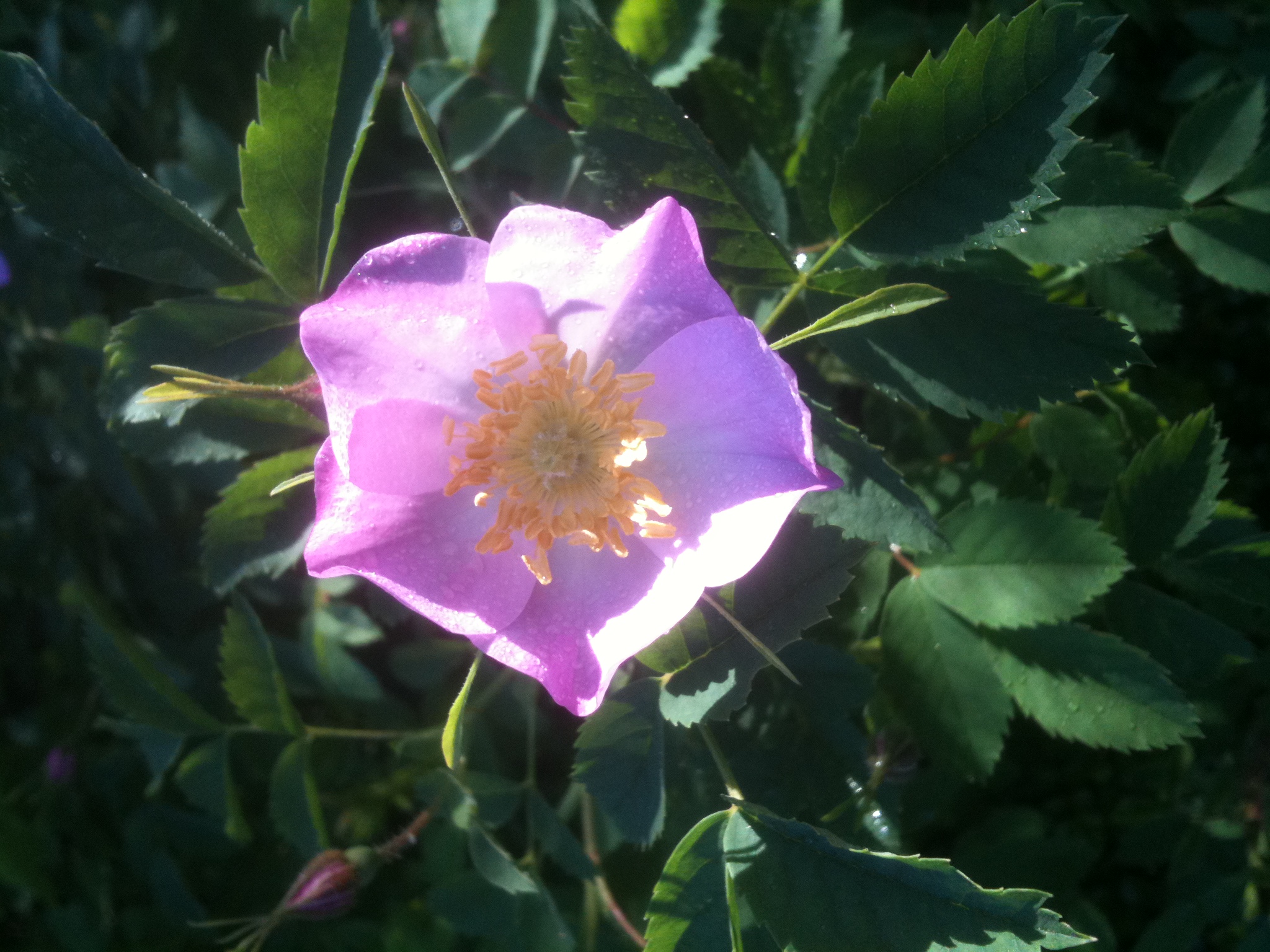
R. Virginiana (native)
A handsomely foliated plant which shares much in common with other North American species; densely suckering, tall canes with abundant foliage, somewhat smooth, small but charming pink flowers with soft-yellow stamens and a fine crop of round red hips. Tops on Rosa virginiana‘s list of attributes though should be its fall foliage which runs the full spectrum from gold and yellow to amber, rose and crimson.
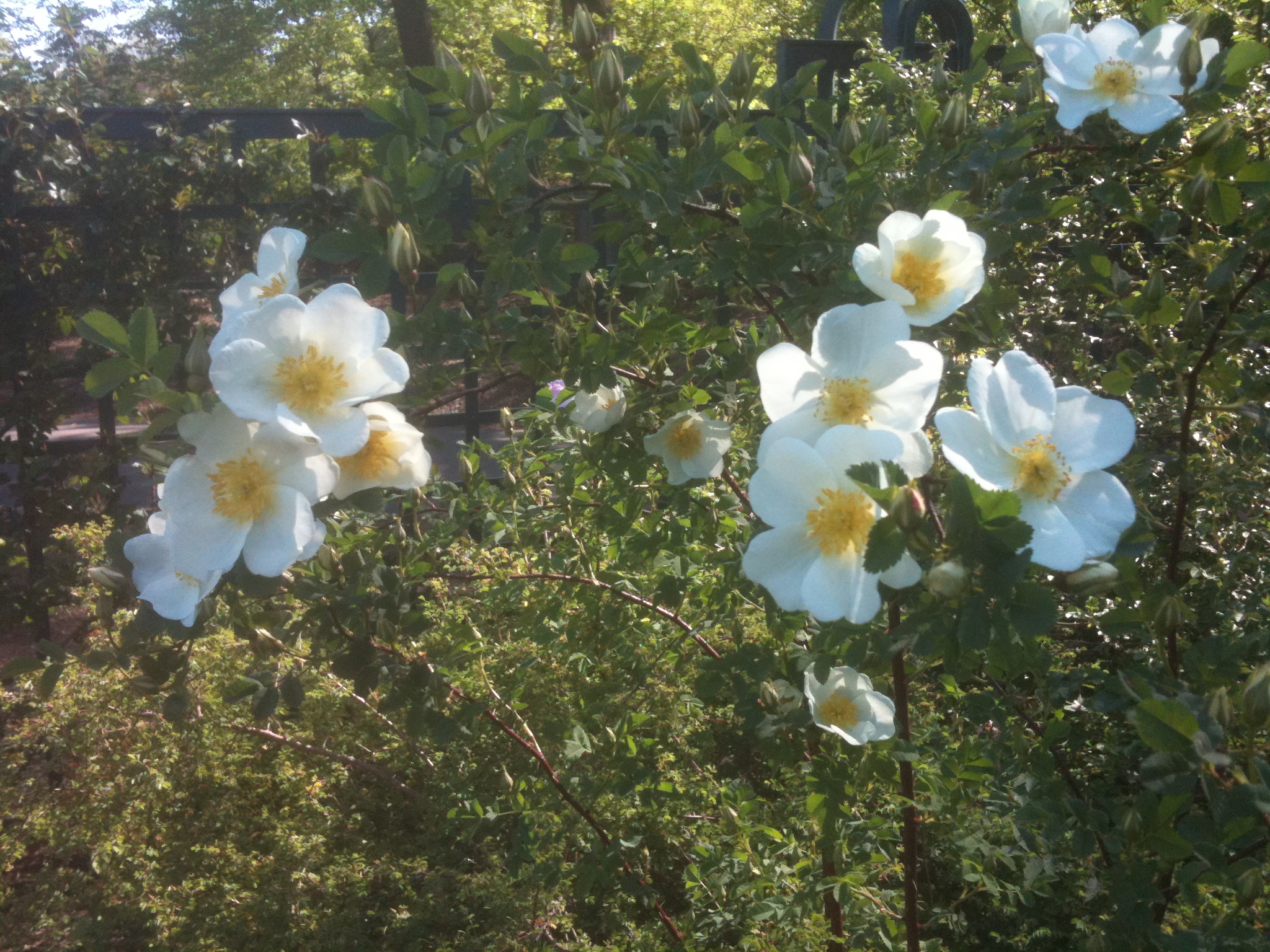
R. spinossissima var. ‘Altaica’
A larger-flowered clone selection of the well-known and much-loved wild Scots Briar. Its rich, creamy, almost yellow flowers are well scented, and are borne on a tall and spreading plant.
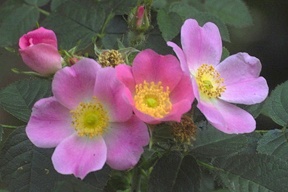
R. eglanteria
A lovely, deep pink form of the Eglantine, with its fragrant and handsome foliage, large and arching and very productive of small, round, scarlet hips. The Eglantine has naturalized in North America, where it is found far and wide. Britton and Brown documented it in Virginia and Tennessee as R. rubiginosa.
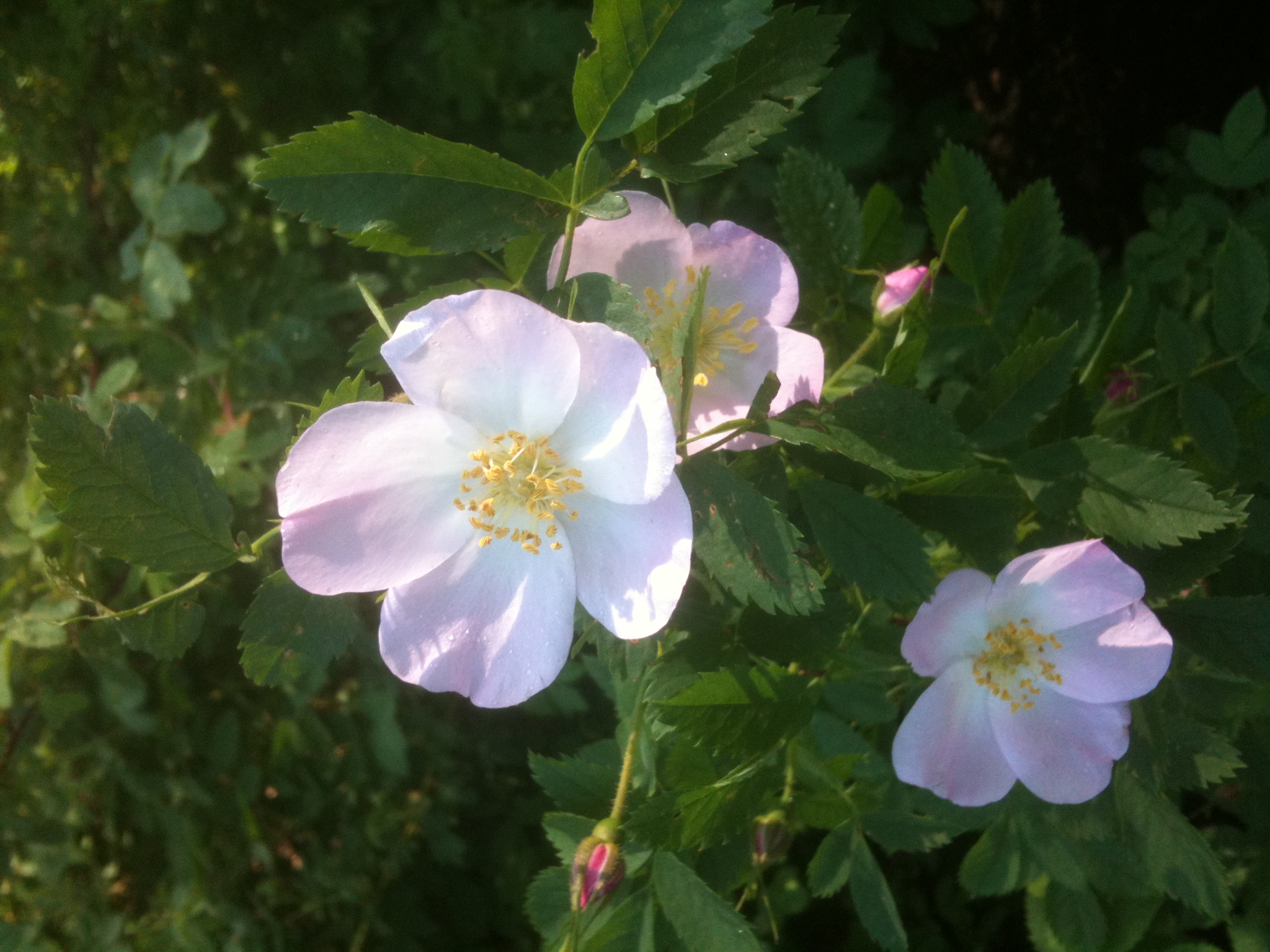
R. blanda (native)
Wide, crepey petals of lightest rose-pink with pale-buff stamens and a pungent-sweet scent. A native of the Northeast of North America R. blanda is nearly thornless with soft green foliage. Sets a crop of small, round red fruit. Synonym: Hudson’s Bay Rose, Labrador Rose.
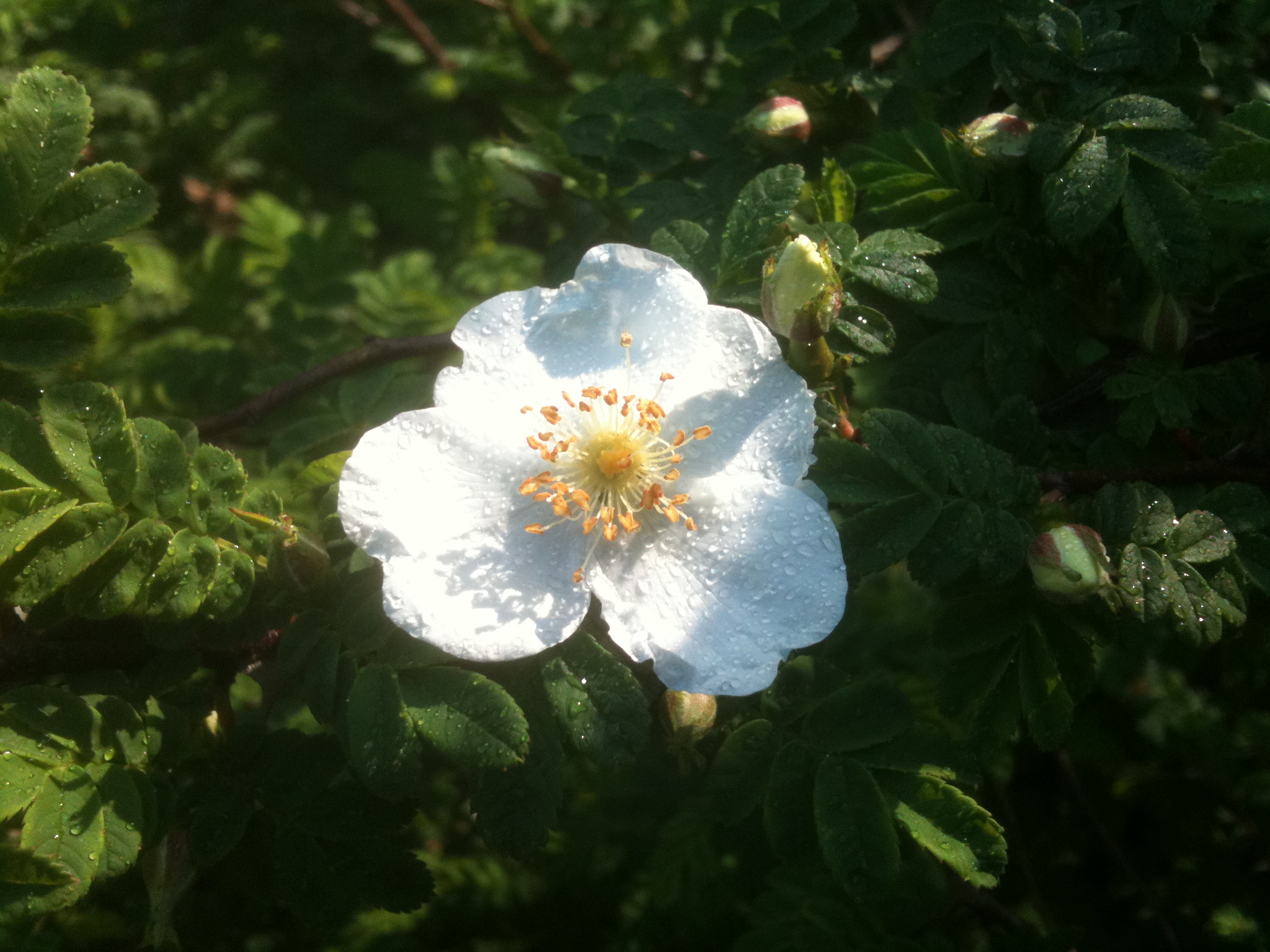
R. sericea pteracantha
Noted for its four-petaled white flowers, but more particularly for the elongated red thorns that stud its canes, R. sericea pteracantha makes a stunning focus in a mixed planting. Tall and arching, and perhaps most effective if older canes are removed annually to make way for new ones, whose thorns are yet translucent and red.
Posted in Photography on May 9 2011, by Ann Rafalko
Mallards are common. But when you look closely, they’re anything but.
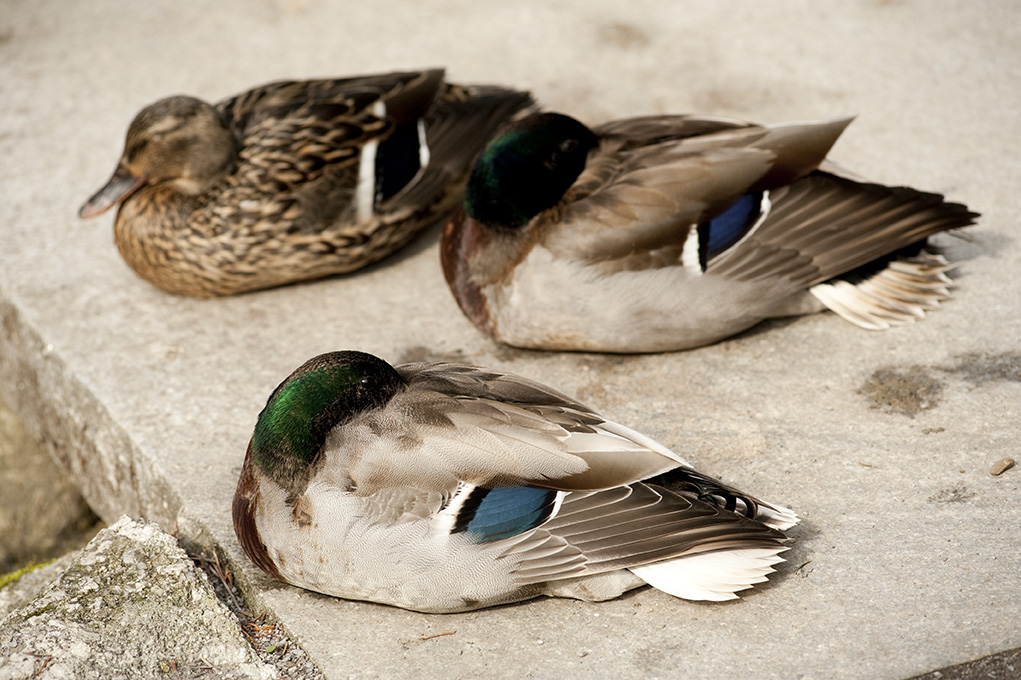
Duck Nap (Photo by Ivo M. Vermeulen)
Posted in Photography on May 8 2011, by Ann Rafalko
Azaleas can dazzle, but they can also coax you in with their charms.
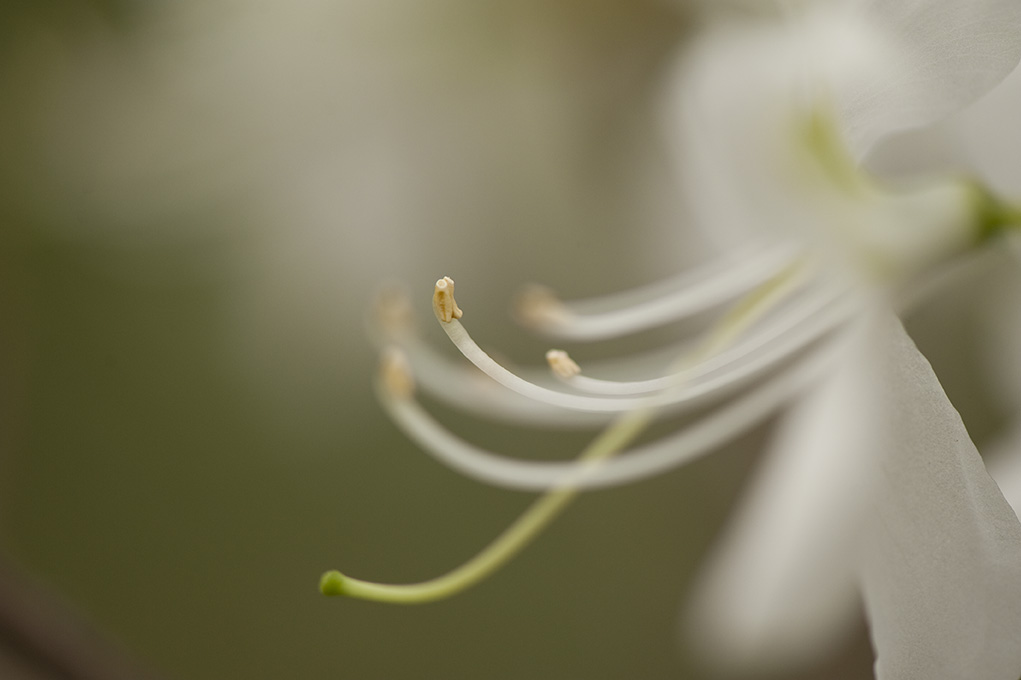
Rhododendron vaseyi ‘White Find’ (photo by Ivo M. Vermeulen)
Posted in Photography on May 7 2011, by Ann Rafalko
These three beauties from the amazing new Azalea Garden (which opens today!) confound expectations and dazzle in unexpected tones.
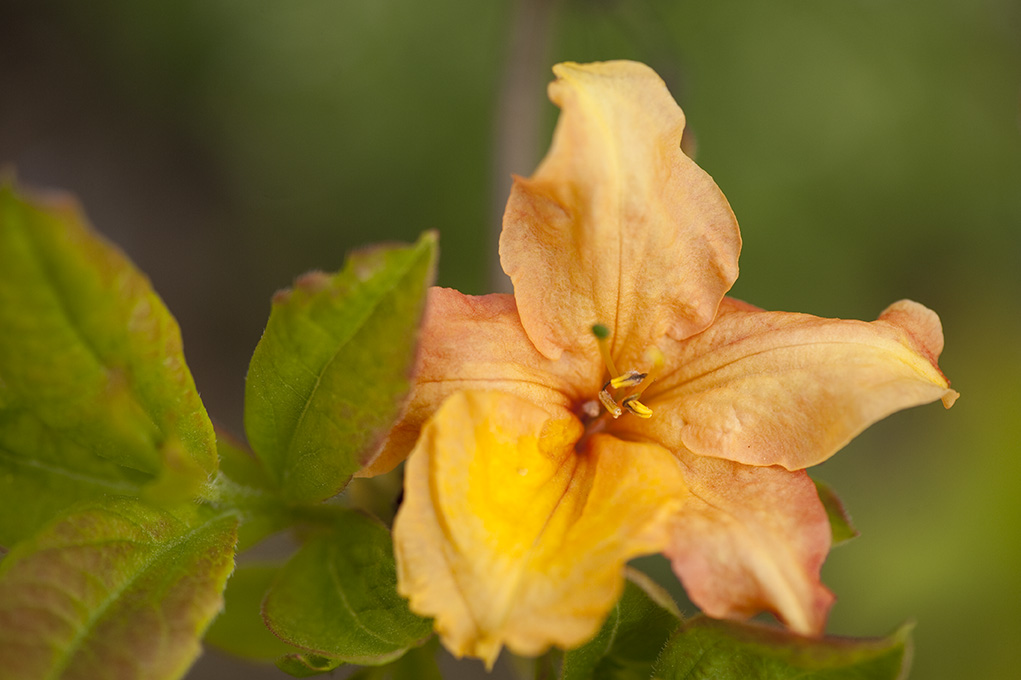
Rhododendron luteum ‘Bee Dazzler’
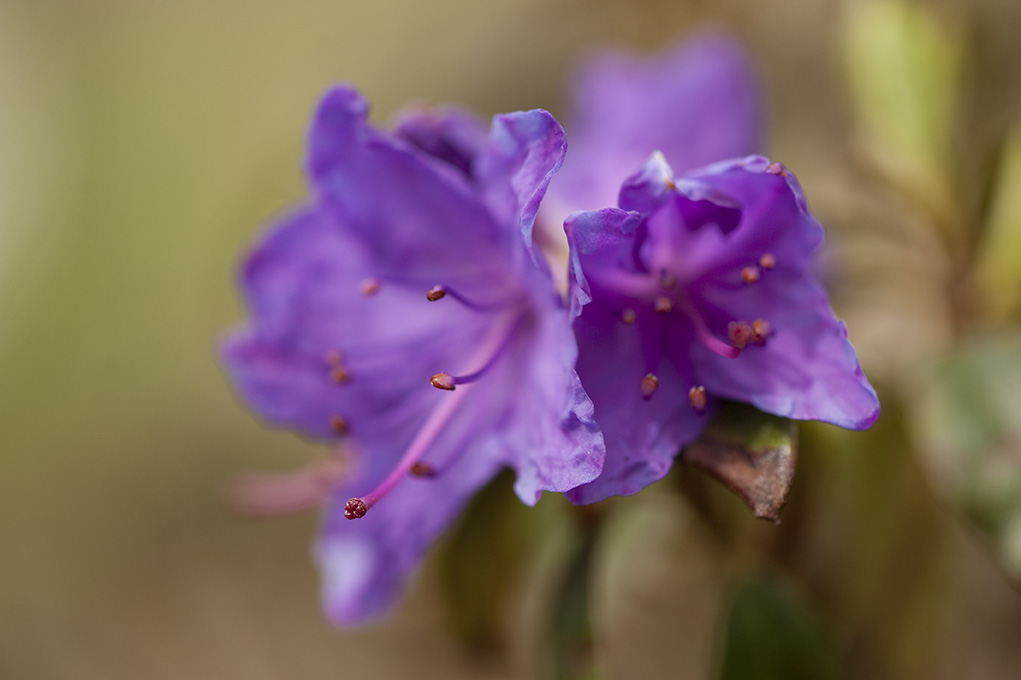
Rhododendron ‘Blue Baron’
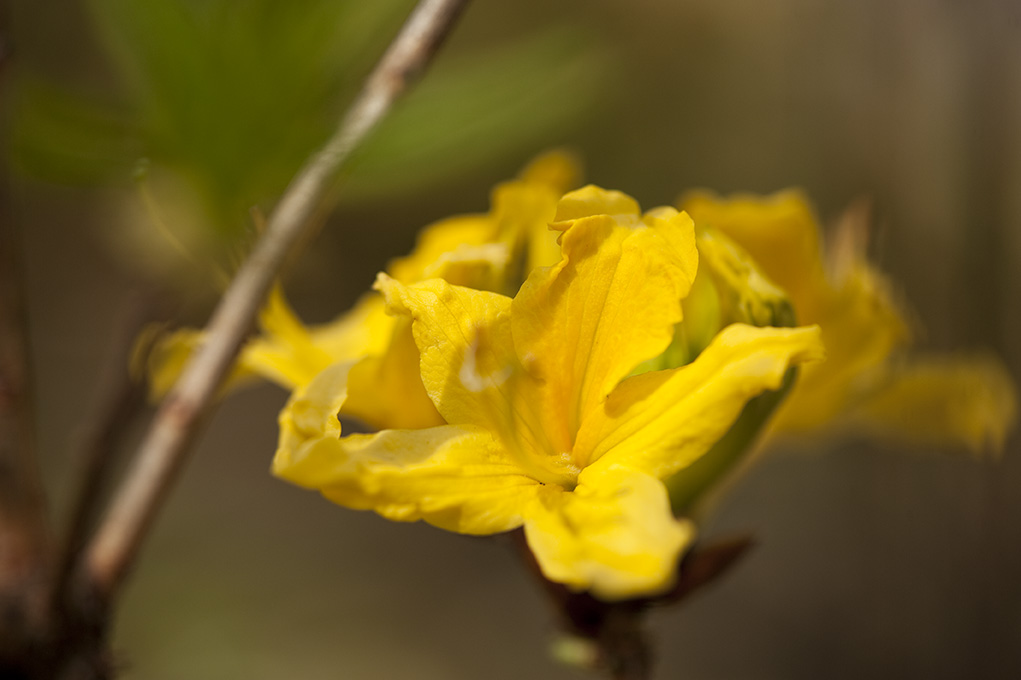
Rhododendron luteum ‘Golden Comet’
Photos by Ivo M. Vermeulen
Posted in Around the Garden on May 5 2011, by Ann Rafalko
 There are many things we cannot predict in life, chief amongst them: The weather. And while the forecast for this weekend is looking a little gray, maybe we can all just use the drizzly weather as opportunity to tell mom, “You are my sunshine!” (come on, you know she sang that to you when you were little), while feting her over a delicious picnic amid the insanely gorgeous new Azalea Garden.
There are many things we cannot predict in life, chief amongst them: The weather. And while the forecast for this weekend is looking a little gray, maybe we can all just use the drizzly weather as opportunity to tell mom, “You are my sunshine!” (come on, you know she sang that to you when you were little), while feting her over a delicious picnic amid the insanely gorgeous new Azalea Garden.
Call us hopeless optimists, but the weatherman does seem to be wrong more often than right. So don’t let the threat of a little rain scare you away. This weekend’s Garden Parties will go on, rain or shine. Picnics will be under the Picnic Pavilions. Activities will take place under a tent in the Children’s Adventure Garden. And the soft, gray tones will just make the unbelievable colors of the new Azalea Garden that much more spectacular! So come celebrate with us, and let your mother be the one who shines!
 Bill Einhorn, Instructor, Landscape Design
Bill Einhorn, Instructor, Landscape Design

























